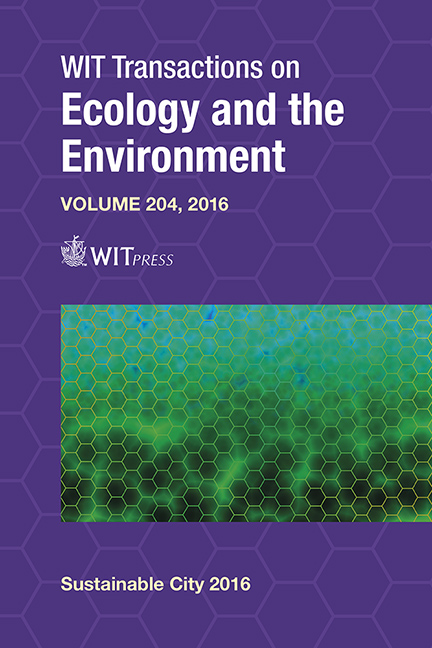Urban Management Foundation In Risk Reduction
Price
Free (open access)
Transaction
Volume
204
Pages
12
Page Range
3 - 14
Published
2016
Size
3,147 kb
Paper DOI
10.2495/SC160011
Copyright
WIT Press
Author(s)
C. O. Gociman, T. C. Florescu, E. S. Georgescu, C. I. Moscu, I. M. Stanescu
Abstract
The methodology of managing the security habitat exposed to multi-hazard is based on a matrix determined relation between the reference value and the area condition value. The reference value = Σ cultural, functional, affiliation value (0–5).
Many studies are supporting the idea of the mental city, kept in the memory of every individual. The spatial footprint belongs to the personality of everyone and its de-structuring creates instability and stress.
Thus, the value of spatial perception becomes important in relation to the space and surely it is different from one individual to another, depending on age, gender, education, religion, ethnics.
The condition value or vulnerability value refers to the degree of the urban system, as the sum of its components – built space (buildings, installations) and free space (streets, alleys, green spaces, water) can be affected by one multi-hazard during a time interval. The analysis of this value is extremely complex and it is based on the application of the specific quality norms.
The status value Σ safety value (structural, exploitation, protection from fire), environment value (hygiene, thermal protection, sound protection, waterproofing, lighting) (0–5).
The analysis on every criterion is based in mapping the entire built space according to the specialty methodologies. According to statistic studies carried out by the Romanian Academy after the earthquake from 1977, the affiliation to a building group defined as structural behaviour, depending on the number of levels, material and construction period was identified. Mapping with values between 0 and 5 was extended also to the other criteria.
The structural vulnerability condition evidently determines the vulnerability of the population, as scenarios show.
The intervention methods are mapped in 3 groups – maintenance, amelioration and transformation, each with specific sub-groups and they regard the rehabilitation of the habitat, but this fact does not cover the entire problematic of the urban tissue.
Urban reorganization will be founded by complex risk analyses, which, through specific risk scenarios will estimate the losses and identify the opportunity of creating a security area centered on a security hub.
The security ensemble is the urban area composed of a habitat which can be functional to intervention and which has in its center the security hub for emergency locations able to locally manage the sanitary-logistic and accommodation crisis.
The area has to have a supporting infrastructure network – transportation ways correctly dimensioned, which to allow the evacuation of the population, preferably underground parking lots which can function as emergency shelters, utilities with flexible connections and alternative independent sources built based on a correct pre-disaster management. This will allow the control over the central intervention areas, transportation system, emergency sanitary system and civil protection.
Keywords
habitat, transport, public space, security hub, risk reduction, urban strategies





